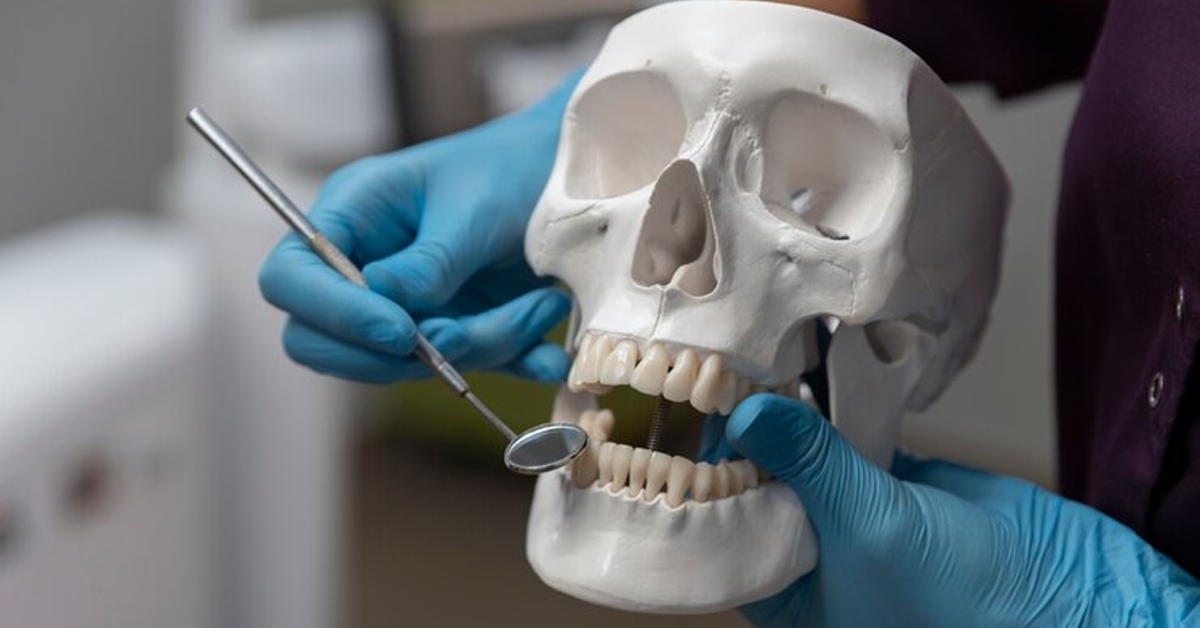Gum disease is a common oral health issue that affects millions worldwide. When the disease progresses, it can lead to significant damage not only to the gums but also to the supporting bone structure. One of the advanced treatment options for severe gum disease is osseous surgery, specifically bone contouring. This procedure helps restore the bone around the teeth to a healthier shape, supporting long-term oral health.
In this article, we will explore everything you need to know about osseous surgery and bone contouring for gum disease—from causes and symptoms to the procedure itself, recovery, and benefits.
ALSO READ: MegaCaching.Com – Adventure Awaits In Every Cache
What Is Osseous Surgery?
Osseous surgery is a periodontal surgical procedure aimed at reshaping the bone around the teeth. The term “osseous” means “related to bone,” and this surgery involves cleaning and recontouring the damaged bone caused by advanced gum disease, also known as periodontitis.
Why Is Osseous Surgery Needed?
In gum disease, bacterial infection causes the gums to pull away from the teeth, creating pockets that collect plaque and bacteria. If untreated, this infection spreads to the bone supporting the teeth, leading to bone loss and irregular bone surfaces. Osseous surgery smooths these bone defects, helping gums to heal properly and preventing further disease progression.
Understanding Bone Contouring in Gum Disease Treatment
Bone contouring, also called osseous recontouring, is a key component of osseous surgery. It involves carefully removing or reshaping the infected or uneven bone tissue to eliminate periodontal pockets and restore the bone’s natural form.
How Bone Contouring Helps
- Reduces Pockets: Deep pockets caused by bone loss trap bacteria and plaque. Contouring reshapes the bone, reducing these pockets and making oral hygiene easier.
- Promotes Healing: A smooth bone surface encourages the gums to reattach tightly to the teeth.
- Prevents Tooth Loss: By stabilizing the bone and gum tissue, contouring helps preserve the teeth and prevents them from becoming loose.
Signs and Symptoms Indicating the Need for Osseous Surgery
Early-stage gum disease can often be managed with non-surgical treatments like scaling and root planing. However, when the condition worsens, osseous surgery might be necessary.
Look for these symptoms:
- Persistent gum inflammation or swelling
- Deep periodontal pockets (measured by a dentist)
- Gum recession exposing tooth roots
- Loose or shifting teeth
- Bone loss visible on dental X-rays
- Persistent bad breath or bad taste
If these signs appear despite initial treatments, your periodontist may recommend osseous surgery.
The Osseous Surgery Procedure: What to Expect
Pre-Surgical Evaluation
Before surgery, your dentist or periodontist will conduct a thorough exam including:
- Measuring pocket depths
- Taking dental X-rays to assess bone loss
- Discussing your medical and dental history
The Surgery Itself
The procedure is usually done under local anesthesia. Here’s a step-by-step overview:
Incision and Flap Creation: The surgeon makes an incision in the gums to lift a flap and expose the bone.
Cleaning: Diseased tissue and bacteria are removed from the bone surface and tooth roots.
Bone Contouring: Using specialized tools, the bone is reshaped to eliminate defects and smooth out irregularities.
Flap Repositioning: The gum flap is sutured back over the bone, now closely adapted to the reshaped bone.
The entire process typically takes 1 to 2 hours, depending on the severity and extent of the disease.
Recovery After Osseous Surgery
Recovery from osseous surgery involves several key steps to ensure proper healing:
- Pain and Swelling Management: Mild pain and swelling are common; over-the-counter pain relievers and cold compresses can help.
- Oral Hygiene: Gentle brushing and rinsing with antimicrobial mouthwash help keep the area clean without disturbing sutures.
- Diet: A soft diet is recommended for several days to avoid irritating the surgical site.
- Follow-up Visits: Your periodontist will check healing progress and may remove sutures after about one to two weeks.
Complete healing can take several weeks, during which maintaining good oral hygiene is critical to prevent reinfection.
Benefits of Osseous Surgery and Bone Contouring
- Improved Gum Health: Reduces infection and inflammation in gums.
- Preservation of Teeth: By stabilizing bone, surgery helps maintain tooth support and prevents tooth loss.
- Enhanced Smile: Healthier gums and bone contribute to better overall dental aesthetics.
- Easier Home Care: Reduced pocket depths make brushing and flossing more effective.
- Long-Term Oral Health: Prevents the progression of periodontitis, reducing the risk of systemic issues linked to gum disease.
Risks and Considerations
Like all surgeries, osseous surgery has potential risks, such as:
- Infection
- Prolonged swelling or pain
- Gum recession near treated sites
- Temporary tooth sensitivity
Choosing an experienced periodontist and following all post-op care instructions minimize these risks.
Who Is a Candidate for Osseous Surgery?
Not everyone with gum disease requires osseous surgery. Candidates typically include:
- Patients with moderate to advanced periodontitis
- Those who have deep periodontal pockets unresponsive to non-surgical treatment
- Individuals with significant bone defects detected on X-rays
- Patients seeking to preserve natural teeth rather than opting for extraction
Your dentist will recommend osseous surgery based on thorough clinical evaluation.
Preventing Gum Disease and Bone Loss
Prevention is always better than cure. Maintain these habits to protect your gums and bone health:
- Brush teeth twice daily with fluoride toothpaste
- Floss daily to remove plaque from between teeth
- Schedule regular dental cleanings every six months
- Avoid tobacco products
- Maintain a balanced diet rich in vitamins and minerals
- Treat any early signs of gum disease promptly
Conclusion
Osseous surgery with bone contouring is a vital treatment option for advanced gum disease that helps restore bone health, improve gum attachment, and preserve natural teeth. While the idea of surgery can be intimidating, understanding the process, benefits, and recovery can make the decision easier. Working closely with your dental professional ensures the best outcome for your oral health.
ALSO READ: Gameverse TheGame Archives: Explore Gaming History
FAQs
What is osseous surgery?
Osseous surgery is a periodontal procedure that reshapes the bone around teeth damaged by gum disease. It involves cleaning infected tissue and smoothing bone surfaces to reduce pocket depth and promote gum healing.
Is osseous surgery painful?
The surgery is performed under local anesthesia, so you should not feel pain during the procedure. Mild discomfort and swelling afterward are normal and manageable with medication.
How long does it take to recover from bone contouring surgery?
Most patients recover within 1 to 2 weeks for initial healing, but full gum and bone healing may take several weeks. Following post-op care instructions speeds recovery.
Can osseous surgery prevent tooth loss?
Yes, by removing infected tissue and reshaping bone defects, osseous surgery helps stabilize teeth and prevent further bone loss, reducing the risk of tooth loss.
Are there alternatives to osseous surgery?
For mild gum disease, non-surgical treatments like scaling and root planing may suffice. Osseous surgery is usually recommended when pockets are deep and bone loss is significant.
If you suspect advanced gum disease or have persistent symptoms, consult your dentist or periodontist to explore if osseous surgery and bone contouring are right for you. Early intervention can save your teeth and protect your smile for years to come.







